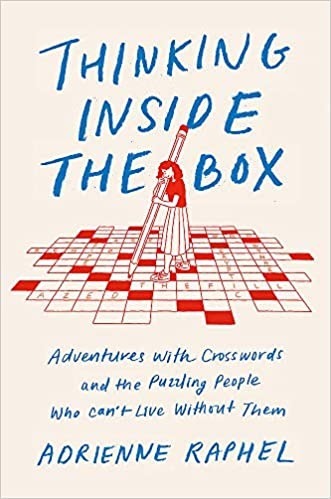
Thinking Inside the Box (Robinson) by Adrienne Raphel
Eight letters: for some a “daily ritual”, for others more of an occasional pastime. It is the humble crossword, and its history goes back 107 years. Adrienne Raphel’s account of this history takes the reader on a journey across land and sea. The crossword was born just before Christmas in 1913, at the offices of the New York World newspaper, which published a new word puzzle in a supplement called “Fun”. It instructed readers to “fill in the small squares with words which agree with the following definitions”. It had been designed by a New York World staffer, the British-born Arthur Wynne. At first it was called a “Word-Cross”. It would entertain people for decades to come.
As well as being an avowed cruciverbalist (or crossword enthusiast), Raphel is a contributor to the New Yorker, and her engaging account of this popular puzzle blends this fascinating history with lively reportage. At one point, she goes on a crossword-themed cruise to celebrate 75 years of the New York Times crossword, meeting those who set it each week. At another, she attends the annual American Crossword Puzzle Tournament in Connecticut. Raphel’s enthusiasm for Gordian grids is infectious. She even has a go at becoming a crossword constructor herself. Sequestered in the bucolic Berkshires, her quest involves an elf-like librarian, who helps her to create the perfect themed puzzle with an offhand comment.
The story is peppered with enjoyable anecdotes about eminent crossword enthusiasts. T. S. Eliot, for example, was a profligate consumer of the puzzle, taking his daily dose on the bus every morning. The list of enthusiasts includes Vladimir Nabokov, who “thought in crosswords” and published the first Russian puzzle in 1924. Contemporary word grid fanatics include Daniel Craig and Nancy Pelosi. Alongside the weird and wonderful details, Raphel relays social history. She sets out the wildly varying, sometimes extreme terms in which the crossword has been described by commentators – from a valuable tool for intellectual engagement to a waste of time for idle minds.
Somewhat predictably, having set out to read and review a book about crosswords, I’ve ended up obsessively doing them myself. The answer to this clue sums up Raphel’s book well: “Rhymes with the Venerable Bede” (who probably would have appreciated a crossword or two to get him through those long scribing sessions). 2, 10, 4. (If you can’t guess it, it’s “an incredible read”.)
From the autumn 2020 edition of New Humanist.

